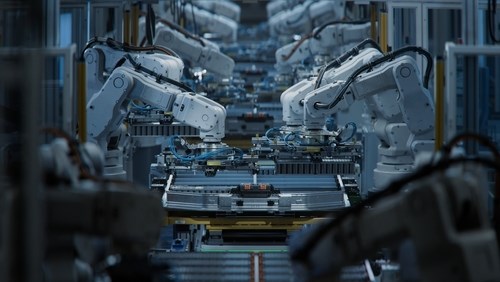
SCANOLOGY has just introduced NimbleTrack Gen2. With upgraded technology, SCANOLOGY's NimbleTrack Gen2 is capable of scanning large and complex areas significantly faster, while maintaining measurement-level accuracy. This is the next generation of the company's mobile optical tracking and 3D scanning systems. SCANOLOGY's NimbleTrack Gen2 is designed to deliver higher performance, especially in speed and measurement range.

A breakthrough opportunity for R&D processes awaits the Vietnamese engineering community. The specialized workshop "Driving Engineering Innovation Through Smart Simulation" organized by ANSYS will take place on October 29, 2025, at the Innovation Hub Building, updating the latest advanced simulation solutions for the manufacturing, electronics design, and Nano-Micro industries.

In the global race to automate manufacturing, China is emerging as a pioneer with the “dark factory” model – where robots and artificial intelligence completely replace humans. Requiring no light or rest, the new generation of factories operate continuously 24/7 with superior precision and efficiency.
Discover the critical roles of sheet metal fabrication in automotive manufacturing, enhancing design, efficiency, and durability in 9 steps...
Here, V-Proud would like to share with readers about the 9 steps for working with sheet metal in the automotive manufacturing industry as follows:
Bending Sheet Metal: Sheet metal is bent into the desired shape by applying bending stress. The sheet metal is bent so that the plastic deformation of the metal is achieved. This prevents the metal from returning to its original shape.
Hemming Sheet Metal: Hemming is the process of creating a roll on the edge of the sheet metal to make it safer to handle. Hemming can also be classified into eccentric hemming and concentric hemming. Eccentric hemming has the center above the sheet level, while concentric hemming has the center at the same level as the sheet metal.
Deep Drawing: Deep drawing is a sheet metal forming process in which the shape of the sheet is changed to the desired shape through multiple stages by using a series of dies. Punches and dies are used to create changes at each stage. Using this process, a sheet of metal is transformed into various shapes such as fuel tanks, sinks, and automotive parts. Deep drawing is mainly used for large-scale mass production.
Hydroforming: The metal is placed on a die, and high-pressure fluid is used to shape the sheet. Since a mating die is usually not required, hydroforming can be used to create unique shapes.
Laser Cutting: Accurate with an extremely smooth surface finish. CNC machines are commonly used to cut specific shapes. After the program is entered, the specific cutting path is executed by the laser. Laser cutting has the advantage of flexibility. When necessary, changes to the required shape can be made easily.
Punching: This is a very common technique for creating holes in sheet metal. The equipment includes a punch and a die. There is a very small clearance between them.
Rolling: Classified as hot rolling or cold rolling. In hot rolling, the temperature of the steel is around 1400 degrees F. This can help achieve thicknesses from 1/16 inch to 5/16 inch. In cold rolling, the process is performed at room temperature. The material is acid-washed and heat-treated to achieve a good surface finish.
Blanking: Used for smaller parts, suitable for both small and large details. Thicknesses up to 25 mm can be easily bent, and the length of the part can be up to 6 m.
Roll Forming: Primarily used to produce custom parts in small quantities for vintage cars. It is also used to create sheet metal parts for automotive and aircraft prototypes.
Mild Steel: This is an excellent material to use for parts such as outer door panels of cars. This type of sheet metal is easy to weld and difficult to tear or puncture. If you are looking for lightweight sheet metal, mild steel is an ideal choice.
Aluminum: Aluminum coil is widely favored as a sheet metal for automotive restoration. Aluminum is ideal for dashboards due to its light weight and relatively easy machinability. Its use with colored anodizing is a growing trend.
Stainless Steel: Has extremely high oxidation resistance, making it very durable. The high melting point of stainless steel makes it ideal for fabricating and adding automotive parts such as brackets, plates, and pipes, as well as for interior trim details.
V-Proud can provide comprehensive measurement and quality control services to ensure accuracy and quality in every stage of the sheet metal processing in the automotive manufacturing industry, from the initial forming to the finished product.
V-PROUD JOINT STOCK COMPANY
Address: Lot A-23 Xuan Phuong Garden, Phuong Canh Ward, Nam Tu Liem District, Hanoi
Hotline: 0896 665 247
Email: xinchao@v-proud.vn
(84) 896 555 247